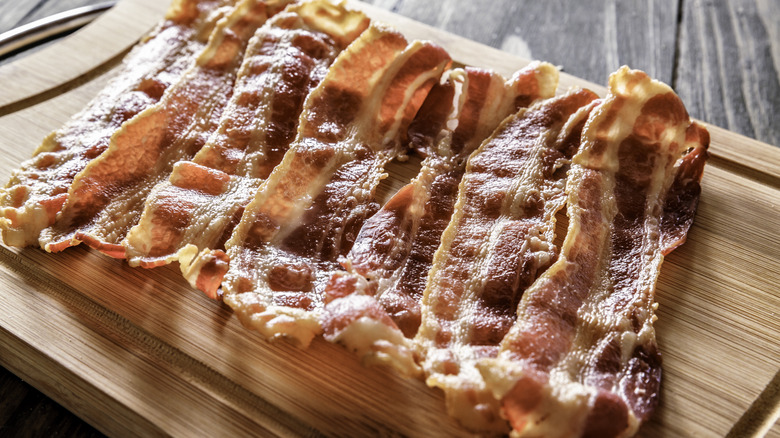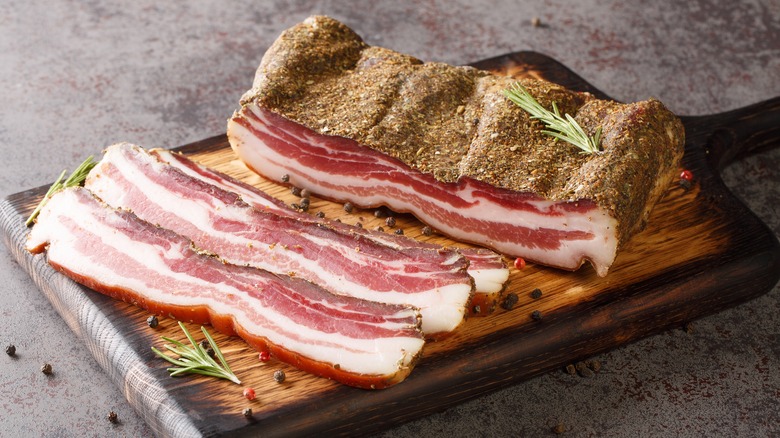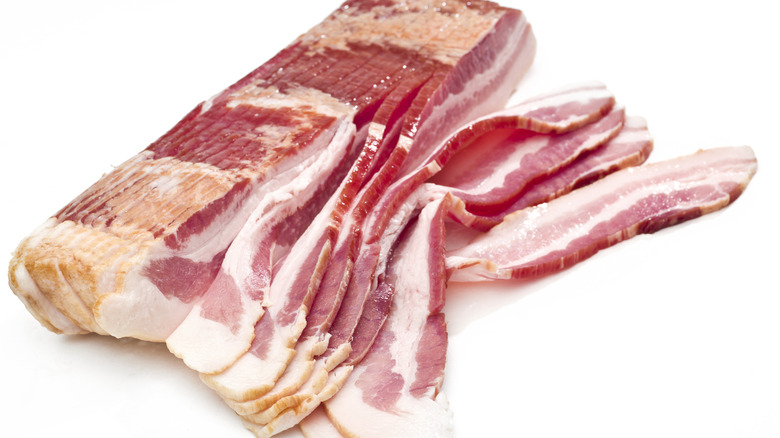What It Means When Your Bacon Is 'Pumped' Vs. Dry Cured
Everybody's favorite breakfast staple wears a lot of labels that indicate everything from its organic status to if it was smoked or sugared to whether or not it's even made from a pig (true bacon only ever comes from pork, if you were wondering). One label that can clue you in to the overall taste and quality of the bacon is how it was cured.
Bacon comes from the belly of the pig. The curing process is what transforms it from just pork belly to what we know and love as bacon. Two of the most popular methods of curing the meat are dry-curing (or dry-rubbed) and pumping. Curing is just another way of saying salt was added to the meat as a means of preserving it to extend its shelf-life while also adding some flavor.
The main curing methods center around whether or not liquid is involved in the process, but there are other differences between the two worth consideration for any bacon lover.
How bacon is dry cured
Dry-curing, also called dry rubbing, is exactly as it sounds — the raw pork meat is rubbed with dry salt, seasonings, and often sugar. The mixture of seasonings is rubbed to cover all of the meat, and then it sits to cure. The dry-curing process takes about two weeks for all of the moisture to be released. Drying out the meat can help to halt the growth of bacteria. No liquid is involved until the rub is simply rinsed off. It is considered the classic, established way of curing bacon, and although it is the more time-consuming method, many prefer it for its added flavor.
The time involved and added flavor are why dry-rubbed bacon tends to have a higher price point per weight than other varieties. For this reason, brands will proudly display "dry rubbed" on the packaging to indicate the quality of the bacon inside.
What is pumped bacon?
Pumped bacon is the more industrial approach to curing pork meat and can be considered a form of wet-curing. It's the money-maker, so to speak, because it's faster and can be done on a more industrial level than dry-curing and rubbing. The pumping curing process only takes between 6 to 24 hours. The meat is injected with a saline solution or brine. Essentially, it's liquifying a dry rub and pumping it directly into the meat to add moisture and flavor. This liquid injection makes the meat weigh more, which means it can be priced higher — but it won't be as flavorful as the dry-cured bacon.
Bacon brands will not be labeled as "pumped," but the ingredient list will indicate if that was the method of curing the meat. The brine injected must contain either ascorbate or sodium erythorbate (isoascorbate) as required by the USDA to lessen the amount of any harmful nitrosamines, a known carcinogen found in cigarettes, per the National Cancer Institute.


